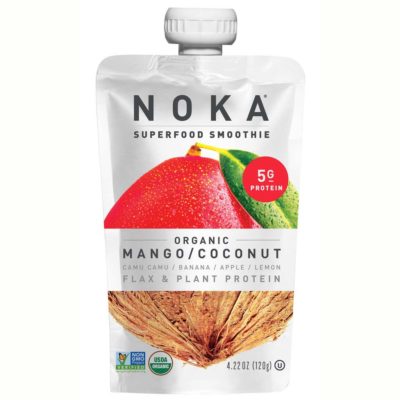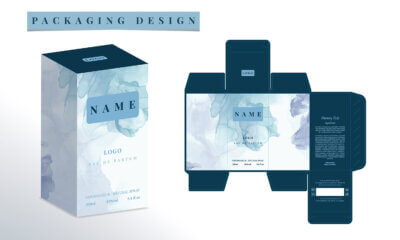 It is sometimes hard to pick out a single feature that makes one package more or less attractive than another. Several packaging characteristics usually work together to leave a positive or negative impression.
It is sometimes hard to pick out a single feature that makes one package more or less attractive than another. Several packaging characteristics usually work together to leave a positive or negative impression.
And since we “shop with our eyes,” comparing packages rather than their contents, effective packaging leads to better sales. The stakes are high for manufacturers and retailers asking the perennial question: “What makes packaging attractive”?
Regardless of what you sell, presenting your products in their best light boosts your bottom line. Professional packaging consultants provide custom-tailored approaches encompassing specific packaging design requirements and targeting your established sales objectives.
Successful strategies are borrowed from diverse industries, including real estate, where effective agents know precisely what it takes to sell properties.
Curb Appeal is a High Packaging Priority
Real estate agents preparing homes for sale understand that certain elements are more important than others when effectively marketing properties. To create curb appeal, realtors work with sellers to make key upgrades and pay attention to particular details about how their listings look. Other imperfections are left alone without seeming to impact buyers’ impressions.
Effective packaging decisions are made using the same balanced approach, striving to capture each item’s best selling points without going overboard with the effort. Bright colors and eye-catching graphics provide substantial bang for the buck, getting shoppers’ attention without adding significant costs to packaging projects.
Molded containers, for example, have a more significant visual impact when made with red, orange, or other colored plastics, yet they cost the same as black or white options. And when products have features that sell themselves, clear viewing windows are incorporated into retail packaging to maximize curb appeal.
Standing Out In a Crowd
Perception is an individual concern flavored by experiences and personal notions about what looks good and what doesn’t. Despite differences in the way we view attractiveness. However, we tend to process information in similar ways. The key to effective packaging is to strike positive chords for a broad cross-section of people, standing out for all the right reasons.
Logos and other printed graphics contribute to attractive packaging, distinguishing particular products from others that surround them on store shelves. Bold, metallic accents and holographic effects are also used to set packages apart, adding to branding opportunities for products associated with particular packaging styles.
Unique packaging add-ons help products stand out too. Secondary packaging that bundles multiple items into single units, for example, provides additional surfaces for highlighting product features and creates distinct multi-piece presentations.
Fitting Right In with Trends
Using emerging technology, packaging trends, and the latest packaging materials is a great way to draw positive attention to your brand. By matching packaging styles and materials to the merchandising requirements of your product niche, contract packagers stay within the range of accepted standards, helping you stand out for all the right reasons.
On the other hand, outdated graphics and packaging methods draw the wrong type of scrutiny.
What is the Branding Story Behind Your Packaging?
Equally crucial to attractive packaging is the story behind your packaging. Over the years, many companies have tried to tell a story with their packaging. Marketers today use every possible platform to say to the brand’s story.

Whether it’s TV ads, magazine articles, or word of mouth, product packaging and placement within the marketplace are the most compelling forms of communication. Your packaging alone can persuade consumers to purchase your product over the competition. You may ask why the packaging process is so important. Well, the brand story is told in two ways, verbal and visual.
Visual Aspect of Your Brand
Visual is the most important as it catches the eye of the consumer the quickest, you have a precious few seconds as the consumer scans the shelves looking for a product, so the visual aspect of your packaging has to stand out from the other products.
The colors, packaging structure, imagery, fonts, and background are visible. The overall aesthetics has to convey why this product is better than the others next to it, simple and to the point.
Branding Through Verbal Communication
Verbal communication can straightforwardly tell the brand story using words and descriptions. The front and back panels can have multiple messages consumers like to see. It tells what the packaging contains. Every bit of free space should be used to tell the brand story. Your packaging alone can influence first-time buyers and keep you loyal customers.
Research has proven that consumers are likelier to buy the first item they pick up in the retail environment. Hence the importance of visual and verbal packaging. Your brand story should deliver a simple, truthful, memorable story to the consumer. It must also convey brand trust, which is very important to the consumer. Your packaging can tell that story!!
Packaging Brand Examples
The best example might be the Evian brand. Their packaging and graphics are simple, clear bottles with a crisp blue label and cap, and their text says “Natural Spring Water” Fresh from the Alps. You can see the clear water, and the crisp blue color helps you think it is clean water, so their packaging tells you a story, and you trust the brand.
Crayola Crayons is another brand that uses visual and verbal packaging to attract consumers’ attention. If you look at a Crayon box, it shows the wind range of beautiful colors in that box which is visually appealing to the consumer. Some of the cutout displays in the Crayola section show a big smiley face, which promotes customers’ fun and is a compelling selling motivator.
Conclusion
Attractive packaging reflects modern standards and integrates seamlessly into sales environments. Experienced packaging contractors utilize cutting-edge materials, adding value to your products by positioning them correctly.
Packaging is all around us and is a vital part of success, you spend all your money on research and development, and packaging is always the last. Still, it is one of the most essential elements in the success of your brand and product.

From what we’ve seen, custom packaging that combines smart design with quality printing always leaves a stronger impact on customers.